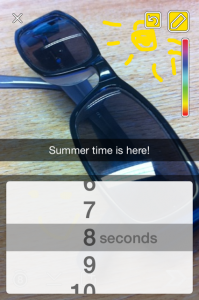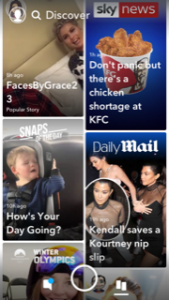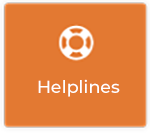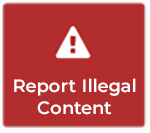Parents: A guide to Snapchat
A Guide to Snapchat
Snapchat is an application used to share photos, videos, text, and drawings. It’s free to download the app and free to send messages using it. It has become hugely popular in a very short space of time, especially with young people. There is one feature that makes Snapchat different from other forms of texting and photo sharing: the messages disappear from the recipient’s phone after a few seconds.
A guide to Snapchat: How and Why Do Children Use It?
Young people are using Snapchat for various reasons, the largest common factor is probably down to cost, once you’re on WiFi, sending a message with Snapchat is free. Traditional SMS text or photo messages can be pricey to send; especially for young people who are often on ‘pay as you go’ phones.
For some people, text messages and posts on Facebook and Twitter are too permanent. Snapchat offers its users spontaneity to communicate without any long-term consequences, a trait almost completely absent from most social media platforms where users connect with ‘friends’ in a one-up-manship parade of who went out to the coolest party and who has the best clothes. This perceived freedom from a trail of archived messaging activity is very attractive to teens as they strive to go, ‘off the grid’.
The app boasts a large younger-user demographic and for many teens, the fact that their parents do not use Snapchat is a big draw.
What Are the Risks?
The majority of Snapchats are sent in a frivolous and fun manner with the most common topics for Snapchat messages being to document meals about to be eaten and funny faces to friends. The main selling point to young people of this app, is the way images self-destruct and this has led parents groups and online communities to flag the potential for cyberbullying and sexting type activity.
We generally advise young people to take a screen capture of posts or texts they deem offensive or inappropriate. In the case of Snapchat, screen captures can be difficult to perform as the Snapchat app requires the user to keep one finger on the screen (on certain devices) to view the image. If a user does manage to make a screen capture, the sender of the image is notified. This feature could dissuade teens and children from even attempting to screen capture an offensive message but it is still possible to do so.
The temporary nature of Snapchat messages could lead some teens to get into hot water for sending ‘sexts’ or sexually suggestive images and text messages. Research has shown that sexting can be very upsetting emotionally, especially if the messages go astray, ending up in the wrong hands. Even though images disappear from the Snapchat app, it doesn’t necessarily mean that screen grabs weren’t taken which could be shared on other social media platforms.
The ‘Discover’ section allows users to flick through small snippets of news stories and trending articles that are not always appropriate for young users. There is no way to turn off this feature and many of the articles are tabloid in nature with adult content.
What Can You Do?
The best defense is to discuss the risks with your child and try to agree on what you both think is an acceptable way to use it. Make sure the line between acceptable and inappropriate use is clear. Discuss sanctions if you feel it would help but remember that the most important thing as a parent is to be there to help if things go wrong. Sometimes the best way to keep communication channels open is to remove punishment from the equation.
One issue you should definitely talk about is how permanent is permanent deletion? A very quick trip into YouTube land searching for ‘Snapchat hacks’ brought back a long list of entries, detailing everything from how to bypass the 10-second countdown to how to capture screenshots of images without the sender being notified. Teens need to be aware that nothing is 100% private online. Even if an app developer claims messages or data is wiped or deleted, we can’t always guarantee that this is actually the case.
Video Tutorial: How to Keep Snaps Forever
In their Terms and Conditions, Snapchat states:
“Although we attempt to delete image data as soon as possible after the message is received and opened by the recipient …we cannot guarantee that the message contents will be deleted in every case.” This should be a statement of concern Snapchat users and their parents.
Like most other web apps, users have the choice of using them to communicate with existing friends or with the wider world. You should talk with your child about the best way to manage this. Discuss the implications of opening themselves up to SnapChats from their whole address book. A friends list can be set up so messages can be sent and received only from designated friends. As with any online interactions, it’s usually safer to use Snapchat with a selected bunch of trusted people.
A guide to Snapchat: How Can Risks Be Controlled?
Snapchat is not the first or the last app of this type, others include Viber (messages and voice calls), Facebook messaging and WhatsApp. The same rules should apply to all online interactions, only share data with those that you trust in real life, think before you click and report any unsavory data or messages to a trusted adult.
Make sure you to read any updates that occur on the app, these happen quite regularly and may increase the risks on the site to your child. Keep up-to-date here: Explainer: What is Snapchat?









